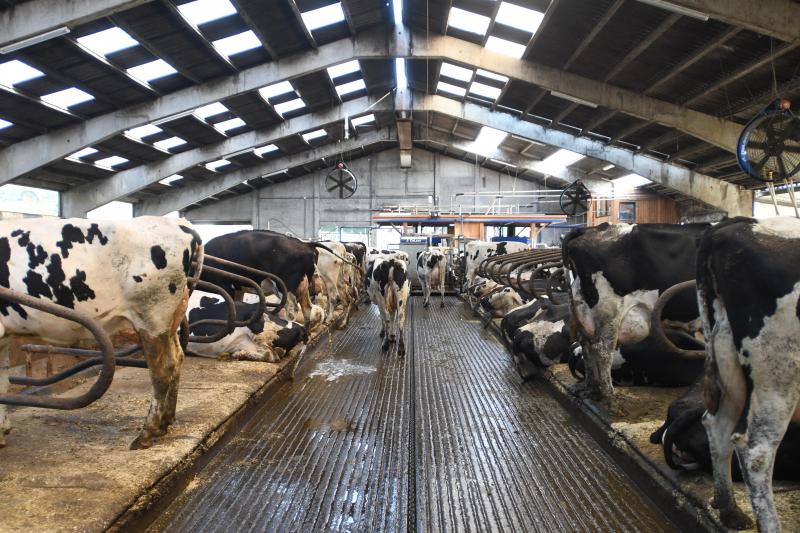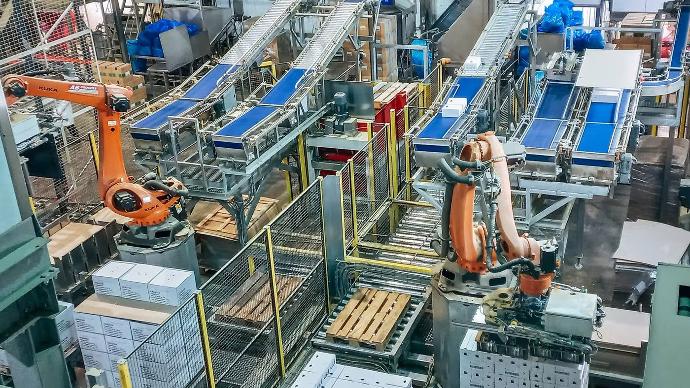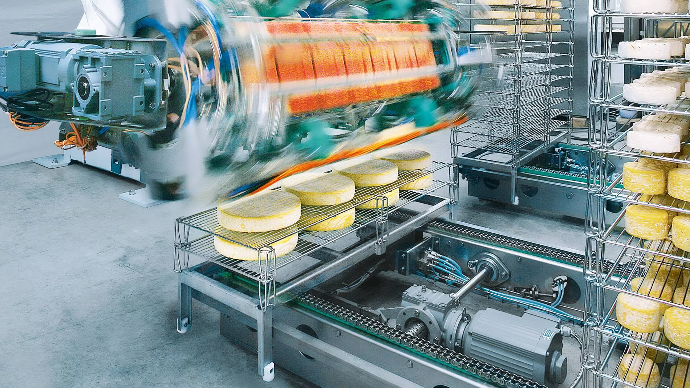The dairy industry plays a crucial role in global nutrition, providing essential products such as milk, cheese, yogurt, and butter. However, the growing demand for high-quality dairy products and the pressure to reduce production costs have led dairy producers to adopt automation solutions. In this blog, we explore how automation is transforming dairy production, enhancing efficiency, quality, and safety.
𝗘𝗻𝗵𝗮𝗻𝗰𝗶𝗻𝗴 𝗣𝗿𝗼𝗱𝘂𝗰𝘁𝗶𝗼𝗻 𝗘𝗳𝗳𝗶𝗰𝗶𝗲𝗻𝗰𝘆
Automation streamlines production processes, minimizing downtime and maximizing overall output. Robots and automated systems can operate 24/7 without the need for breaks, which significantly boosts productivity. For instance, automated milking robots can milk cows faster and more efficiently than manual methods, while also reducing stress on the animals.
𝗤𝘂𝗮𝗹𝗶𝘁𝘆 𝗮𝗻𝗱 𝗖𝗼𝗻𝘀𝗶𝘀𝘁𝗲𝗻𝗰𝘆 𝗼𝗳 𝗣𝗿𝗼𝗱𝘂𝗰𝘁𝘀
The precision of automated systems ensures a high quality and consistency of dairy products. Processing and packaging robots provide accurate measurements, mixing and packaging products with a level of precision that is impossible to achieve manually. This reduces quality variations, offering consumers uniform products with every purchase.

𝗙𝗼𝗼𝗱 𝗦𝗮𝗳𝗲𝘁𝘆 𝗮𝗻𝗱 𝗛𝘆𝗴𝗶𝗲𝗻𝗲
One of the main advantages of automation in the dairy industry is the improvement of food safety and hygiene. Robots can perform tasks in sterile environments, minimizing the risk of contamination. For example, automated cleaning systems can disinfect production equipment with greater efficiency and consistency than manual methods, thereby ensuring high hygiene standards.


𝗥𝗲𝗱𝘂𝗰𝘁𝗶𝗼𝗻 𝗼𝗳 𝗢𝗽𝗲𝗿𝗮𝘁𝗶𝗼𝗻𝗮𝗹 𝗖𝗼𝘀𝘁𝘀
Automation also helps reduce operational costs by decreasing reliance on human labor and optimizing resource utilization. Costs associated with human errors, workplace accidents, and inefficiencies are significantly lowered. Additionally, automation enables better management of energy and raw materials, particularly in terms of waste and production costs.
𝗙𝗹𝗲𝘅𝗶𝗯𝗶𝗹𝗶𝘁𝘆 𝗮𝗻𝗱 𝗔𝗱𝗮𝗽𝘁𝗮𝗯𝗶𝗹𝗶𝘁𝘆
Automated systems provide significant flexibility, allowing dairy producers to quickly adapt to changes in market demand. Robots can be reprogrammed to produce different types of dairy products or to respond to variations in production volume without requiring major modifications to the infrastructure.